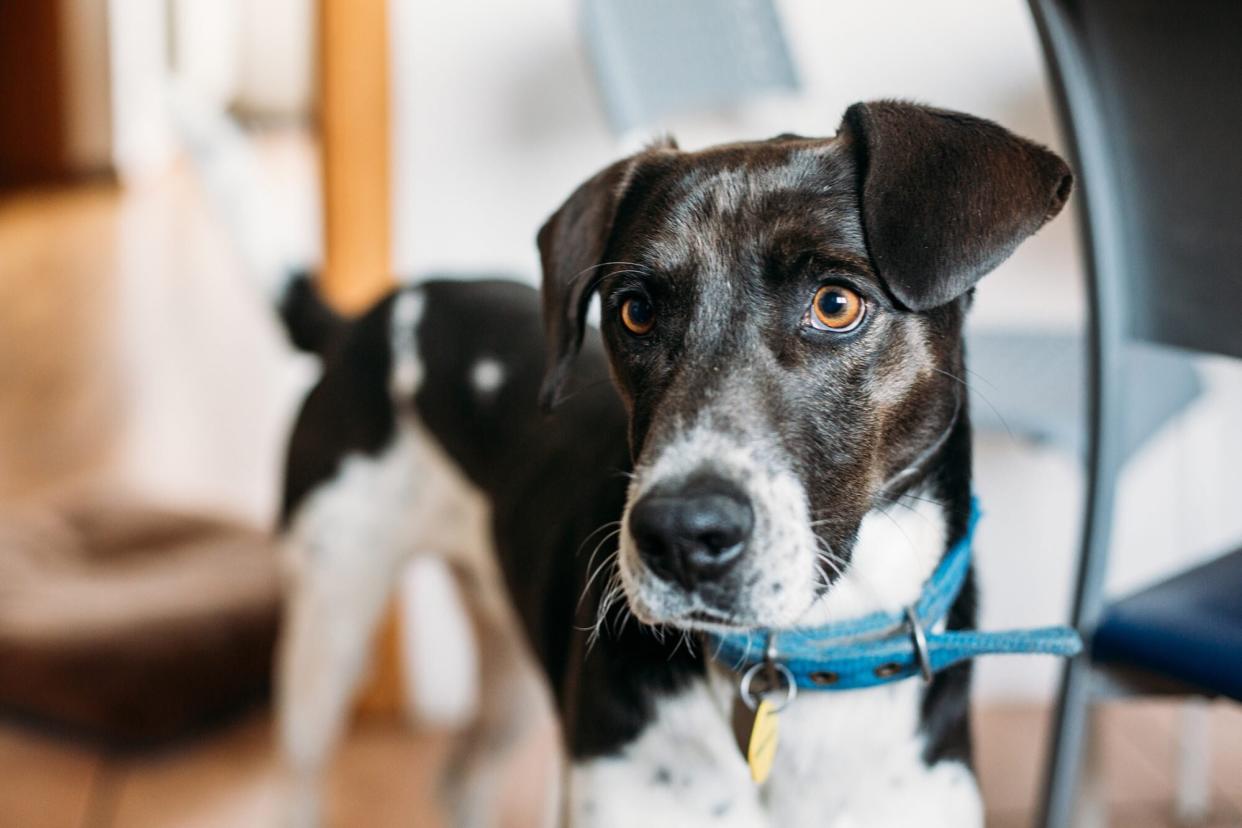What To Do If Your Dog's Vagina Is Swollen

Os Tartarouchos / Getty
If your female dog has a swollen vagina, it may have you wondering what's wrong—especially if she's licking her vulva or if there's a discharge. Here's what might be causing your dog's vaginal swelling and what you can to do about it.
Why Is My Dog's Vagina Swollen?
First things first, you can't actually see your dog's vagina from the outside—the part you can see is called the vulva. Within the vulva lies the urethral orifice (where urine comes out) and the vaginal vestibule, which connects the vulva to the vagina. The vagina is internal and leads to the cervix and uterus.
So, if you notice swelling in your dog's vaginal area, what you're actually seeing is swelling of the vulva. This could mean there's also swelling of the vagina, which is called vaginitis.
A female dog may have a swollen vulva for several reasons. Some are normal, but others require veterinary intervention.
Estrus Cycle
It's normal for an unspayed dog's vulva to swell during certain points in her estrus cycle, or heat. The canine estrus cycle has four stages: proestrus, estrus, diestrus, and anestrus. The vulva will begin to swell during proestrus and remain enlarged to varying degrees throughout estrus and diestrus. The heat cycle occurs approximately every six months, and the vulva may remain swollen for about two months.
Pregnancy and Labor
A pregnant dog's vulva usually becomes swollen anywhere between a week to a few days before she's ready to give birth. The dog will typically lick the area, which may stimulate labor. This is considered a normal part of canine pregnancy and labor. However, contact your vet if your dog is having trouble delivering her puppies.
RELATED: Here's How To Tell if Your Dog Is Pregnant
Injury
Most vulva injuries occur after forced separation during mating. Dogs become stuck together during the end stage of mating due to swelling at the base of the male dog's penis. If the dogs are forcibly separated, the enlarged part of the penis may traumatize the walls of the vagina and the vulva, leading to swelling and bleeding. Because of this, it's important NOT to try and separate dogs while mating, even if it happened by mistake.
But other kinds of trauma can cause an injury to the vulva as well, including getting into a dogfight or being hit by a car. Because the skin of the vulva may touch surfaces when the dog sits, injuries and inflammation can even occur due to contact with irritants on the ground.
Infection
Vulva swelling may be a sign of an infection in the urinary tract or reproductive system. Urinary tract infections are relatively common in dogs and lead to irritation to the urethra and vulva, causing dogs to lick and rub the area. Vaginal infections, typically caused by microorganisms like yeast or bacteria, may also lead to swelling of the vulva and vaginal discharge.
Allergic Reaction or Irritation
Shampoos, conditioners, and other topical products are not intended for use in the genital area and may cause irritation or even an allergic reaction. Use caution when bathing your dog and using topical products to ensure they don't get near your dog's vulva. Only use topical products near the genitals if your vet has specifically instructed you to do so.
Puppy Vaginitis
The term vaginitis refers to swelling of the vagina, but it's also used to describe a specific health condition. Puppy vaginitis is a benign condition sometimes seen in young puppies, usually around 6–8 weeks of age. These puppies often show no signs, but some may lick the area and experience a vaginal discharge. Puppy vaginitis often resolves on its own when the puppy has her first estrus. However, surgical correction may be necessary in some cases.
RELATED: Spay vs. Neuter: What's the Difference?
What to Do If Your Dog's Vagina is Swollen
If you notice swelling in your dog's vaginal area, there are a few things to take into account.
If your dog is spayed, the vulva should not be swollen, so it's important to contact your vet if it continues for more than a day. If you notice that the skin of the vulva is raw, cracked, crusty, or bleeding, be sure to contact your vet right away—whether or not your dog is spayed.
If your dog isn't spayed, then the first consideration should be her heat cycle. Is this her first heat? Most dogs have their first heat cycle between 6–8 months of age. If this isn't her first heat, when did she have her last heat? Contact your vet if the timing seems wrong or your dog is not feeling well.
It's important not to use over-the-counter topical products on your dog's vulva without first consulting your vet. Topicals may encourage your dog to lick the area and make it more irritated. Even worse, some topical medications are toxic if ingested by dogs. Your vet can examine the vaginal area and take samples to determine the cause of the swelling. Treatment may include topical and/or oral medications. Your dog may also need to wear a cone to prevent further licking.

